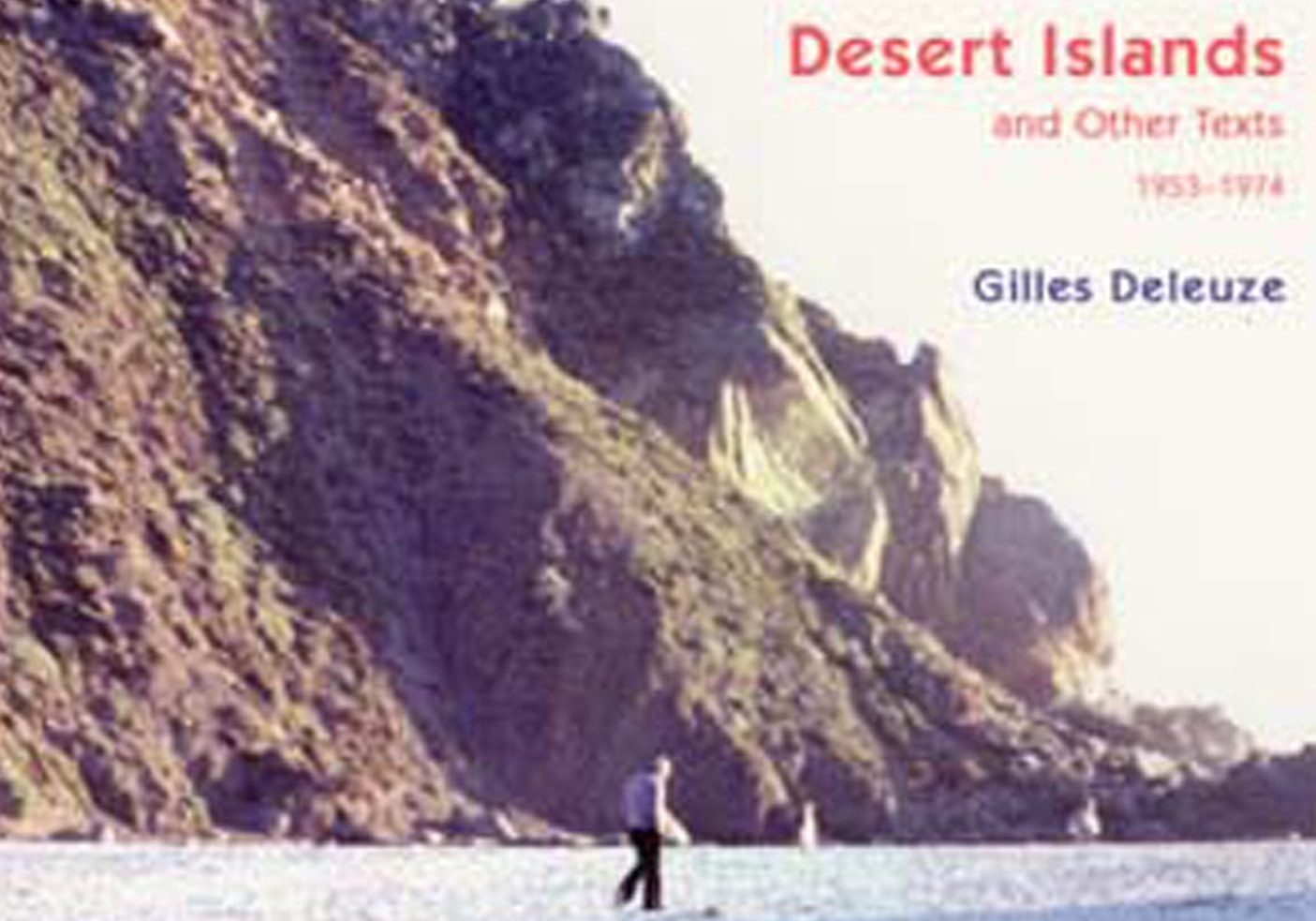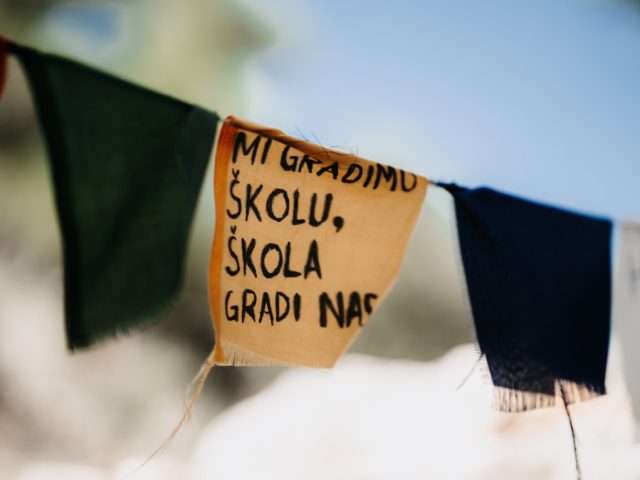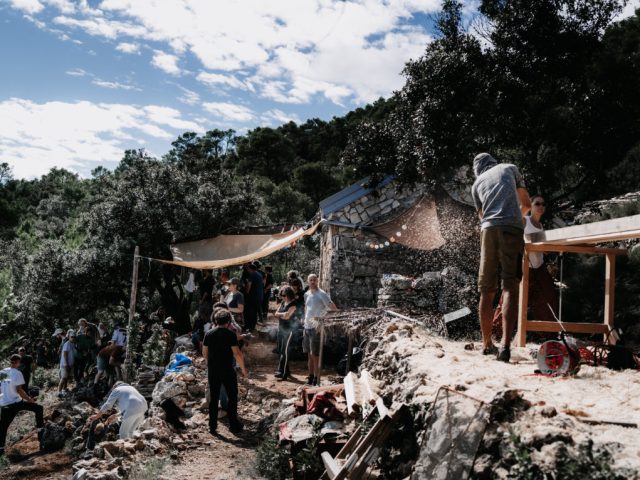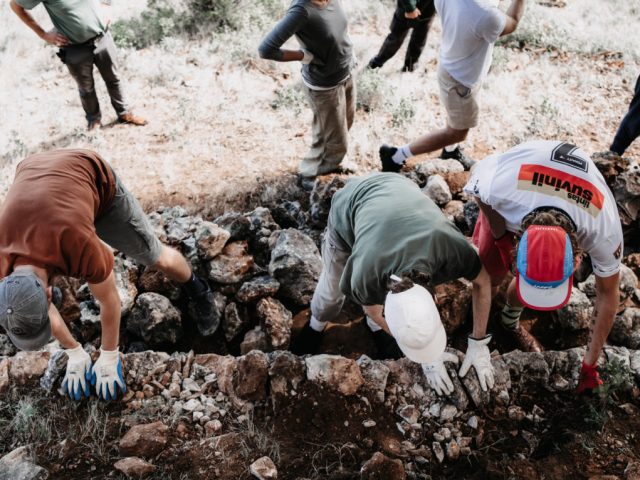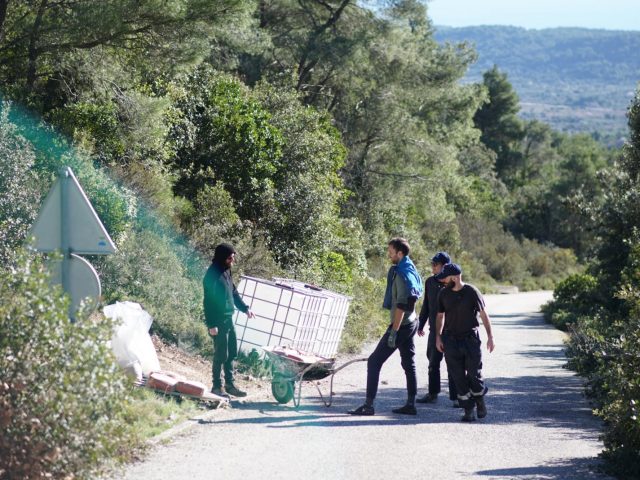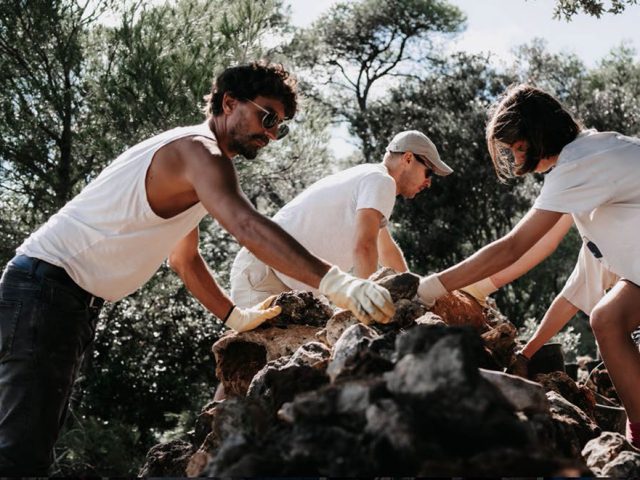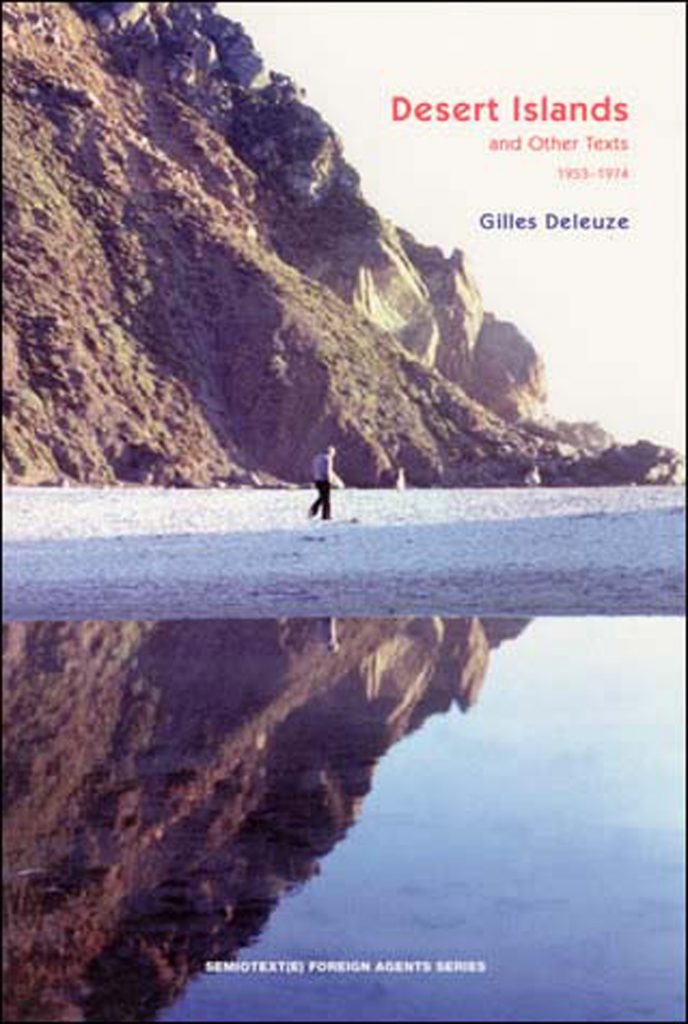
Desert Islands
Geographers say there are two kinds of islands. This is valuable information for the imagination because it confirms what the imagination already knew. Nor is it the only case where science makes mythology more concrete, and mythology makes science more vivid. Continental islands are accidental, derived islands. They are separated from a continent, born of disarticulation, erosion, fracture; they survive the absorption of what once contained them. Oceanic islands are originary, essential islands. Some are formed from coral reefs and display a genuine organism. Others emerge from underwater eruptions, bringing to the light of day a movement from the lowest depths. Some rise slowly; some disappear and then return, leaving us no time to annex them. These two kinds of islands, continental and originary, reveal a profound opposition between ocean and land. Continental islands serve as a reminder that the sea is on top of the earth, taking advantage of the slightest sagging in the highest structures; oceanic islands, that the earth is still there, under the sea, gathering its strength to punch through to the surface. We can assume that these elements are in constant strife, displaying a repulsion for one another. In this we find nothing to reassure us. Also, that an island is deserted must appear philosophically normal to us. Humans cannot live, nor live in security, unless they assume that the active struggle between earth and water is over, or at least contained. People like to call these two elements mother and father, assigning them gender roles according to the whim of their fancy. They must somehow persuade themselves that a struggle of this kind does not exist, or that it has somehow ended. In one way or another, the very existence of islands is the negation of this point of view, of this effort, this conviction. That England is populated will always come as a surprise; humans can live on an island only by forgetting what an island represents. Islands are either from before or for after humankind. But everything that geography has told us about the two kinds of islands, the imagination knew already on its own and in another way. The elan that draws humans toward islands extends the double movement that produces islands in themselves. Dreaming of islands—whether with joy or in fear, it doesn’t matter—is dreaming of pulling away, of being already separate, far from any continent, of being lost and alone—or it is dreaming of starting from scratch, recreating, beginning anew. Some islands drifted away from the continent, but the island is also that toward which one drifts; other islands originated in the ocean, but the island is also the origin, radical and absolute. Certainly, separating and creating are not mutually exclusive: one has to hold one’s own when one is separated, and had better be separate to create anew; nevertheless, one of the two tendencies always predominates. In this way, the movement of the imagination of islands takes up the movement of their production, but they don’t have the same objective. It is the same movement, but a different goal. It is no longer the island that is separated from the continent, it is humans who find themselves separated from the world when on an island. It is no longer the island that is created from the bowels of the earth through the liquid depths, it is humans who create the world anew from the island and on the waters. Humans thus take up for themselves both movements of the island and are able to do so on an island that, precisely, lacks one kind of movement: humans can drift toward an island that is nonetheless originary, and they can create on an island that has merely drifted away. On closer inspection, we find here a new reason for every island to be and remain in theory deserted.
An island doesn’t stop being deserted simply because it is inhabited. While it is true that the movement of humans toward and on the island takes up the movement of the island prior to humankind, some people can occupy the island—it is still deserted, all the more so, provided they are sufficiently, that is, absolutely separate, and provided they are sufficient, absolute creators. Certainly, this is never the case in fact, though people who are shipwrecked approach such a condition. But for this to be the case, we need only extrapolate in imagination the movement they bring with them to the island. Only in appearance does such a movement put an end to the island’s desertedness; in reality, it takes up and prolongs the elan that produced the island as deserted. Far from compromising it, humans bring the desertedness to its perfection and highest point. In certain conditions which attach them to the very movement of things, humans do not put an end to desertedness, they make it sacred. Those people who come to the island indeed occupy and populate it; but in reality, were they sufficiently separate, sufficiently creative, they would give the island only a dynamic image of itself, a consciousness of the movement which produced the island, such that through them the island would in the end become conscious of itself as deserted and unpeopled. The island would be only the dream of humans, and humans, the pure consciousness of the island.
For this to be the case, there is again but one condition: humans would have to reduce themselves to the movement that brings them to the island, the movement which prolongs and takes up the elan that produced the island. Then geography and the imagination would be one. To that question so dear to the old explorers—”which creatures live on deserted islands?”—one could only answer: human beings live there already, but uncommon humans, they are absolutely separate, absolute creators, in short, an Idea of humanity, a prototype, a man who would almost be a god, a woman who would be a goddess, a great Amnesiac, a pure Artist, a consciousness of Earth and Ocean, an enormous hurricane, a beautiful witch, a statue from the Easter Islands. There you have a human being who precedes itself. Such a creature on a deserted island would be the deserted island itself, insofar as it imagines and reflects itself in its first movement. A consciousness of the earth and ocean, such is the deserted island, ready to begin the world anew. But since human beings, even voluntarily, are not identical to the movement that puts them on the island, they are unable to join with the elan that produces the island; they always encounter it from the outside, and their presence in fact spoils its desertedness. The unity of the deserted island and its inhabitant is thus not actual, only imaginary, like the idea of looking behind the curtain when one is not behind it. More importantly, it is doubtful whether the individual imagination, unaided, could raise itself up to such an admirable identity; it would require the collective imagination, what is most profound in it, i.e. rites and mythology.
In the facts themselves we find at least a negative confirmation of all this, if we consider what a deserted island is in reality, that is, geographically. The island, and all the more so the deserted island, is an extremely poor or weak notion from the point of view of geography. This is to its credit. The range of islands has no objective unity, and deserted islands have even less. The deserted island may indeed have extremely poor soil. Deserted, the island may be a desert, but not necessarily. The real desert is uninhabited only insofar as it presents no conditions that by rights would make life possible, whether vegetable, animal, or human. On the contrary, the lack of inhabitants on the deserted island is a pure fact due to circumstance, in other words, the island’s surroundings. The island is what the sea surrounds and what we travel around. It is like an egg. An egg of the sea, it is round. It is as though the island had pushed its desert outside. What is deserted is the ocean around it. It is by virtue of circumstance, for other reasons than the principle on which the island depends, that ships pass in the distance and never come ashore. The island is deserted more than it is a desert. So much so, that in itself the island may contain the liveliest of rivers, the most agile fauna, the brightest flora, the most amazing nourishment, the hardiest of savages, and the castaway as its most precious fruit, it may even contain, however momentarily, the ship that comes to take him away. For all that, it is not any less a deserted island. To change this situation, we would have to overhaul the general distribution of the continents, the state of the seas, and the lines of navigation.
This is to state once again that the essence of the deserted island is imaginary and not actual, mythological and not geographical. At the same time, its destiny is subject to those human conditions that make mythology possible. Mythology is not simply willed into existence, and the peoples of the earth quickly ensured they would no longer understand their own myths. It is at this very moment literature begins. Literature is the attempt to interpret, in an ingenious way, the myths we no longer understand, at the moment we no longer understand them, since we no longer know how to dream them or reproduce them. Literature is the competition of misinterpretations that consciousness naturally and necessarily produces on themes of the unconscious, and like every competition it has its prizes. One would have to show exactly how in this sense mythology fails and dies in two classic novels of the deserted island, Robinson and Suzanne. Suzanne and the Pacific emphasizes the separated aspect of islands, the separation of the young woman who finds herself there;1 Robinson Crusoe, the creative aspect, the beginning anew. It is true that the way mythology fails is different in each case. In the case of Giraudoux’s Suzanne, mythology dies the prettiest, most graceful death. In Robinson’s case, its death is heavy indeed. One can hardly imagine a more boring novel, and it is sad to see children still reading it today. Robinson’s vision of the world resides exclusively in property; never have we seen an owner more ready to preach. The mythical recreation of the world from the deserted island gives way to the reconstitution of everyday bourgeois life from a reserve of capital. Everything is taken from the ship. Nothing is invented. It is all painstakingly applied on the island. Time is nothing but the time necessary for capital to produce a benefit as the outcome of work. And the providential function of God is to guarantee a return. God knows his people, the hardworking honest type, by their beautiful properties, and the evil doers, by their poorly maintained, shabby property. Robinson’s companion is not Eve, but Friday, docile towards work, happy to be a slave, and too easily disgusted by cannibalism. Any healthy reader would dream of seeing him eat Robinson. Robinson Crusoe represents the best illustration of that thesis which affirms the close ties between capitalism and Protestantism. The novel develops the failure and the death of mythology in Puritanism. Things are quite different with Suzanne. In her case, the deserted island is a depository of ready-made, luxurious objects. The island bears immediately what it has taken civilization centuries to produce, perfect, and ripen. But mythology still dies, though in Suzanne’s case it dies in a particularly Parisian way. Suzanne has nothing to create anew. The deserted island provides her with the double of every object from the city, in the windows of the shops; it is a double without consistency, separated from the real, since it does not receive the solidity that objects ordinarily take on in human relations, amidst buying and selling, exchanges and presents. She is an insipid young woman. Her companions are not Adam, but young cadavers, and when she reenters the world of living men, she will love them in a uniform way, like a priest, as though love were the minimum threshold of her perception.
What must be recovered is the mythological life of the deserted island. However, in its very failure, Robinson gives us some indication: he first needed a reserve of capital. In Suzanne’s case, she was first and foremost separate. And neither the one nor the other could be part of a couple. These three indications must be restored to their mythological purity. We have to get back to the movement of the imagination that makes the deserted island a model, a prototype of the collective soul. First, it is true that from the deserted island it is not creation but re-creation, not the beginning but a re-beginning that takes place. The deserted island is the origin, but a second origin. From it everything begins anew. The island is the necessary minimum for this re-beginning, the material that survives the first origin, the radiating seed or egg that must be sufficient to re-produce everything. Clearly, this presupposes that the formation of the world happens in two stages, in two periods of time, birth and re-birth, and that the second is just as necessary and essential as the first, and thus the first is necessarily compromised, born for renewal and already renounced in a catastrophe. It is not that there is a second birth because there has been a catastrophe, but the reverse, there is a catastrophe after the origin because there must be, from the beginning, a second birth. Within ourselves we can locate the source of such a theme: it is not the production of life that we look for when we judge it to be life, but its reproduction. The animal whose mode of reproduction remains unknown to us has not yet taken its place among living beings. It is not enough that everything begin, everything must begin again once the cycle of possible combinations has come to completion. The second moment does not succeed the first: it is the reappearance of the first when the cycle of the other moments has been completed. The second origin is thus more essential than the first, since it gives us the law of repetition, the law of the series, whose first origin gave us only moments. But this theme, even more than in our fantasies, finds expression in every mythology. It is well known as the myth of the flood. The ark sets down on the one place on earth that remains uncovered by water, a circular and sacred place, from which the world begins anew. It is an island or a mountain, or both at once: the island is a mountain under water, and the mountain, an island that is still dry. Here we see original creation caught in a re-creation, which is concentrated in a holy land in the middle of the ocean. This second origin of the world is more important than the first: it is a sacred island. Many myths recount that what we find there is an egg, a cosmic egg. Since the island is a second origin, it is entrusted to man and not to the gods. It is separate, separated by the massive expanse of the flood. Ocean and water embody a principle of segregation such that, on sacred islands, exclusively female communities can come to be, such as the island of Circe or Calypso. After all, the beginning started from God and from a couple, but not the new beginning, the beginning again, which starts from an egg: mythological maternity is often a parthenogenesis. The idea of a second origin gives the deserted island its whole meaning, the survival of a sacred place in a world that is slow to re-begin. In the ideal of beginning anew there is something that precedes the beginning itself, that takes it up to deepen it and delay it in the passage of time. The desert island is the material of this something immemorial, this something most profound.
Source: https://monoskop.org/images/2/23/Deleuze_Gilles_Desert_Islands_and_Other_Texts_1953-1974.pdf
